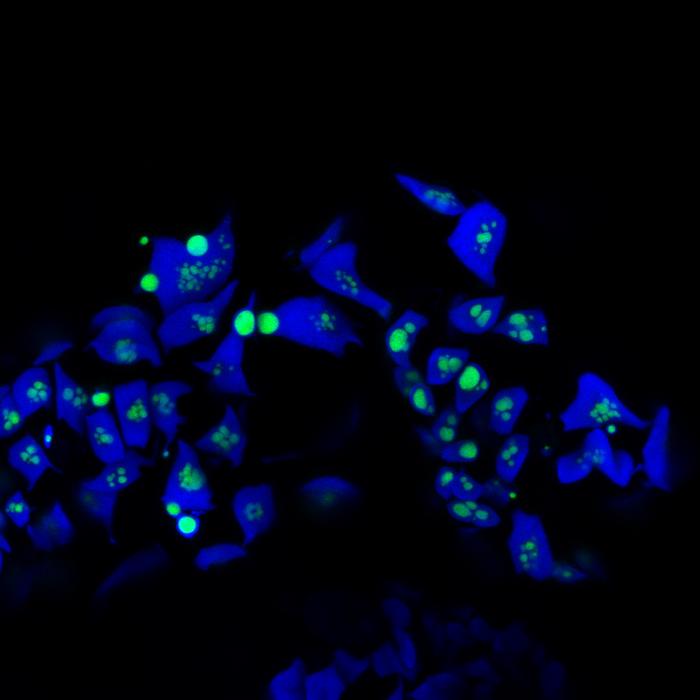Scientists have long been on a quest to enhance the ability of plants to convert carbon dioxide (CO₂) into biomass, presenting an innovative solution that could not only elevate crop yields but also play a vital role in mitigating climate change. Recent studies have unearthed a fascinating class of plants, known as hornworts, that could potentially provide the answers we seek. Distinguished by their unique cellular machinery, hornworts may have the ability to revolutionize photosynthesis as we know it.
At the core of hornworts’ extraordinary capabilities lies an advanced CO₂-concentrating mechanism, often described as a natural turbocharger for photosynthesis. Tanner Robison, a graduate researcher at the Boyce Thompson Institute, emphasizes that this mechanism facilitates more efficient photosynthesis compared to conventional land plants, including many of the crops that sustain global food systems. The efficiency of this process could have profound implications for agricultural practices.
Central to hornworts’ CO₂-concentrating mechanism is a specialized cellular structure dubbed a pyrenoid. This pyrenoid acts as a microscopic chamber within cells, engineered to concentrate CO₂. It is composed of a fluid-like matrix filled with the enzyme Rubisco, recognized for its role in photosynthesis. Rubisco captures CO₂ to synthesize sugars, a fundamental step in the photosynthetic process. The presence of specialized channels around the pyrenoid allows for the pumping of CO₂ into the vicinity of Rubisco, ensuring that it is saturated with the gas critical for sugar production.
Rubisco is notorious for its inefficiencies in photosynthesis, as it can also react with oxygen, thus leading to energy wastage during what is known as photorespiration. Laura Gunn, an assistant professor at Cornell University, notes that hornworts’ ability to concentrate CO₂ around Rubisco drastically enhances the efficiency of this enzyme. By minimizing the effects of photorespiration, hornworts can maximize biomass production, a trait that could significantly benefit agricultural yields.
Utilizing advanced imaging technologies and genetic analysis, researchers have deduced that hornworts employ a notably simpler strategy to concentrate CO₂ compared to other photosynthetic organisms like algae. Algae typically require elaborate mechanisms to pump CO₂ into their systems, whereas hornworts seem to allow CO₂ to diffuse passively. This simplicity suggests that imitating this mechanism in other plant species, particularly vital food crops, might be feasible.
Fay-Wei Li, an associate professor at the Boyce Thompson Institute, describes the potential implications of mimicking hornworts’ CO₂-concentrating design. It’s akin to discovering a more effective engine blueprint—one that could enhance crop photosynthesis by as much as 60%. Such an improvement could dramatically increase crop yields without necessitating additional arable land or resources, providing a much-needed solution in our quest for sustainable agriculture.
Furthermore, this research holds implications for our understanding of plant evolution. The findings indicate that the CO₂-concentrating machinery likely originated in a shared ancestor of all land plants; however, hornworts are the only lineage that successfully retained and refined this crucial ability. This insight enriches our comprehension of evolutionary processes, particularly in the realm of plant adaptation and resilience.
Amidst the ongoing crises posed by climate change and food insecurity, the humble hornwort could serve as a cornerstone for innovative agricultural practices. Though further research is needed to fully harness this natural technology in cultivated crops, the discovery presents a promising avenue toward sustainable agricultural solutions.
Moreover, as researchers continue to explore the potential applications of hornworts, the implications extend beyond mere agricultural yield increases. The environmental benefits of improved photosynthetic efficiency are profound. Enhanced carbon capture rates could directly contribute to mitigating atmospheric CO₂ levels, ultimately assisting in combatting global warming. This could foster a healthier environment while securing food resources for burgeoning populations.
Educational institutions and research organizations are already mobilizing resources to delve deeper into the traits that make hornworts unique. By understanding how these plants master such crucial processes, scientists could engineer better-performing crops capable of thriving under changing environmental conditions. This research trajectory may eventually lead to breakthroughs in creating resilient agricultural systems that not only feed the population but also protect the planet’s ecosystems.
The future of agriculture may be intimately tied to the insights provided by hornworts. As the scientific community seeks to pilfer the secrets of these remarkable plants, a new age of agricultural innovation could dawn. The collaboration between universities, research institutions, and agricultural entities will be pivotal in fostering developments based on these findings.
In conclusion, as we reconsider our approaches to tackling food security and climate challenges, hornworts bring to the table critical insights that promise to reshape our understanding of plant biology. Their unique CO₂-concentrating mechanism not only provides hope for greater crop yields but also lays the groundwork for sustainable practices that could benefit future generations. As we continue to study these small yet significant plants, the applications of their capabilities could usher in substantial changes in agricultural techniques and environmental stewardship.
Subject of Research: Cells
Article Title: Hornworts reveal a spatial model for pyrenoid-based CO2-concentrating mechanisms in land plants
News Publication Date: 3-Jan-2025
Web References: Boyce Thompson Institute
References: Nature Plants
Image Credits: Credit: Tanner Robison, Boyce Thompson Institute
Keywords: Photosynthesis, Sustainable agriculture, Carbon capture, Carbon biomass, Crop yields, Evolutionary processes, Plant evolution, Food security





